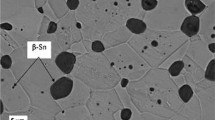Abstract
-
Goal, Scope, Background. As of July 1st, 2006, lead will be banned in most solder pastes used in the electronics industry. This has called for environmental evaluation of alternatives to tin-lead solders. Our life cycle assessment (LCA) has two aims: (i) to compare attributional and consequential LCA methodologies, and (ii) to compare a SnPb solder (62% tin, 36% lead, 2% silver) to a Pb-free solder (95.5% tin, 3.8% silver, 0.7% copper).
Methods
An attributional LCA model describes the environmental impact of the solder life cycle. Ideally, it should include average data on each unit process within the life cycle. The model does not include unit processes other than those of the life cycle investigated, but significant cut-offs within the life cycle can be avoided through the use of environmentally expanded input-output tables. A consequential LCA model includes unit processes that are significantly affected irrespective of whether they are within or outside the life cycle. Ideally, it should include marginal data on bulk production processes in the background system. Our consequential LCA model includes economic partial equilibrium models of the lead and scrap lead markets. However, both our LCA models are based on data from the literature or from individual production sites. The partial equilibrium models are based on assumptions. The life cycle impact assessment is restricted to global warming potential (GWP).
Results and Discussion
The attributional LCA demonstrates the obvious fact that the shift from SnPb to Pb-free solder means that lead is more or less eliminated from the solder life cycle. The attributional LCA results also indicate that the Pb-free option contributes 10% more to the GWP than SnPb. Despite the poor quality of the data, the consequential LCA demonstrates that, when lead use is eliminated from the solder life cycle, the effect is partly offset by increased lead use in batteries and other products. This shift can contribute to environmental improvement because lead emissions are likely to be greatly reduced, while batteries can contribute to reducing GWP, thereby offsetting part of the GWP increase in the solder life cycle.
Conclusions
The shift from SnPb to Pb-free solder is likely to result in reduced lead emissions and increased GWP. Attributional and consequential LCAs yield complementary knowledge on the consequences of this shift in solder pastes. At present, consequential LCA is hampered by the lack of readily available marginal data and the lack of input data to economic partial equilibrium models. However, when the input to a consequential LCA model is in the form of quantitative assumptions based on a semi-qualitative discussion, the model can still generate new knowledge.
Recommendations and Outlook
Experts on partial equilibrium models should be involved in consequential LCA modeling in order to improve the input data on price elasticity, marginal production, and marginal consumption.
Similar content being viewed by others
Author information
Authors and Affiliations
Corresponding authors
Rights and permissions
About this article
Cite this article
Ekvall, T., Andrae, A. Attributional and Consequential Environmental Assessment of the Shift to Lead-Free Solders (10 pp). Int J Life Cycle Assessment 11, 344–353 (2006). https://doi.org/10.1065/lca2005.05.208
Received:
Accepted:
Published:
Issue Date:
DOI: https://doi.org/10.1065/lca2005.05.208




